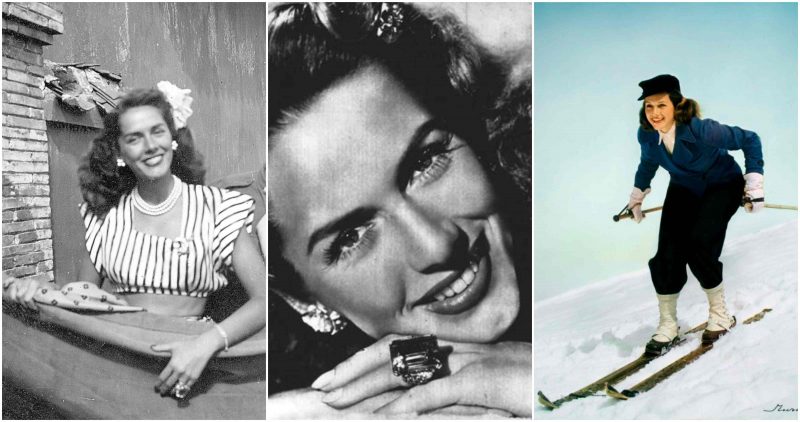Eugenia Lincoln “Jinx” Falkenburg was an actress, expert swimmer and tennis star, and one of the highest-paid and most ubiquitous cover-girl models in the United States during the 1930s and 1940s – one of the first supermodels. She married journalist and influential publicist Tex McCrary in 1945.
Known as “Tex and Jinx” to most American households, the glamorous couple pioneered and popularized the talk-show format, first on radio and then in the early days of television. They hosted a series of interview shows in the late 1940s and early 1950s that combined celebrity chit-chat with discussions of important topics of the day.
Born to American parents in Barcelona, Spain, her father Eugene “Genie” Lincoln Falkenburg was an engineer for Westinghouse. Thinking the name would bring good luck, she was nicknamed Jinx by her mother Marguerite “Mickey” Crooks Falkenburg, an accomplished athlete and tennis player (Brazil women’s champion in 1927), and the name stuck. All the Falkenburg offspring became known for their tennis abilities; younger brother Bob won the men’s singles championship at Wimbledon in 1948.
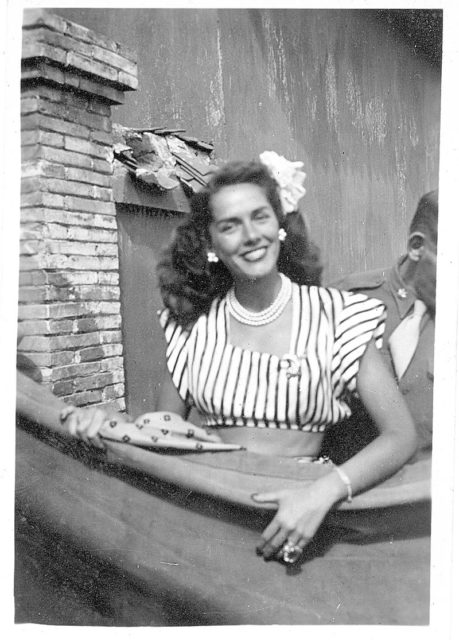
The family moved to Santiago, Chile, where she spent her early years. She first received media attention at age two when the New York Sun ran a full-page picture and story of her exploits as a “baby swimmer.”A revolution in Chile caused the family to return to the United States and the family moved to Los Angeles, California. She attended Hollywood High School but left in 1935 at the age of 16 to pursue a career in acting and modeling.
The Falkenburgs were at the center of a younger social set at the West Side Tennis Club, the watering hole for the Hollywood crowd. While playing tennis at the club, Falkenburg caught the eye of a talent scout for Warner Bros. and got signed to a studio contract. After a few brief walk-ons, Falkenburg’s fluency in Spanish won her minor roles in a series of forgettable Spanish-language films made for distribution in Latin America.
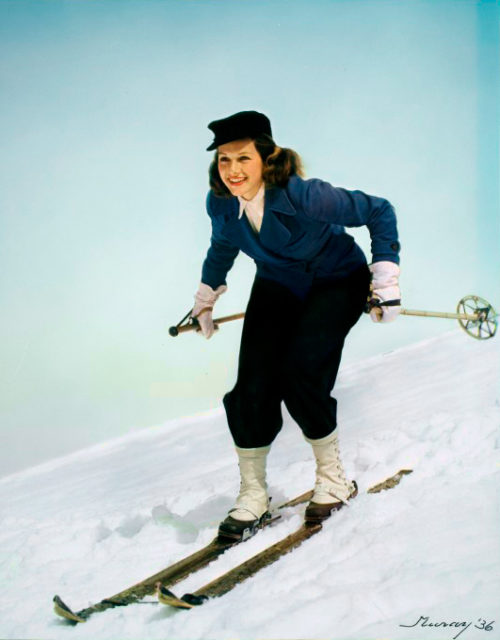
In 1937 her modeling career took off when she met celebrity fashion photographer Paul Hesse, whose Sunset Strip studio was a gathering place for advertising moguls and motion picture industry celebrities. Calling her “the most charming, most vital personality I have ever had the pleasure to photograph”, he took her picture for the August 1937 cover of The American Magazine, triggering similar offers from 60 other publications. Falkenburg eventually wound up on over 200 magazine covers and in some 1,500 commercial advertisements in the 1930s and 1940s. She was considered to be one of the most beautiful women of that era, known for her All-American girl athletic good looks. The New Yorker magazine said she “possessed one of the most photogenic faces and frames in the Western world.” The New York World Telegram claimed her face was seen more often and in more places than any other woman in the country. And a headline story in the January 27, 1941 Life Magazine said Jinx Falkenburg “is the leading candidate for America’s No. 1 Girl for 1941.”
Her biggest breakthrough as a model came in 1940 when she was picked by New York-based Liebmann Brewery, maker of Rheingold Beer, to be the first “Miss Rheingold.” As the face for its marketing and advertising campaign, her image graced countless billboards across the U.S. and she was featured in promotional ads at every store that sold Rheingold. Her face and the campaign were an advertising executive’s dream come true. Rheingold was suddenly the top brand in New York City.
A year earlier she was in Hawaii posing for renowned photographer Edward Steichen for a series of ads for the Hawaiian Steamship Company’s Matson Line, when she fell through a balcony at theRoyal Hawaiian Hotel and landed 30 feet below on a dining room table. While in the hospital recovering from her injuries, she was introduced to singer Al Jolson who was also convalescing there. Jolson wound up offering her a role in his upcoming Broadway show Hold On to Your Hats, that opened in January 1940. Though her part as a cowgirl was small, she stole the show. Fans started gathering nightly at her dressing room door at the Shubert Theater, forming the core of what would become a nationwide “Jinx Falkenburg Fan Club,” the only national fan club not devoted to a movie star.
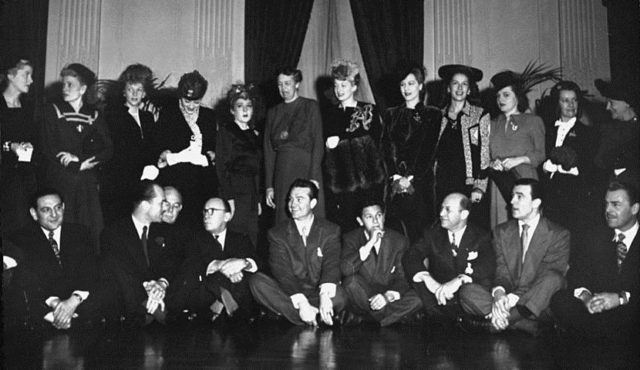
But Hollywood did come calling again and in the early 1940s she did a dozen movies, mainly for Columbia Pictures, sometimes in the starring role. Mostly B-films, neither they nor her acting garnered much in the way of critical plaudits. Among them were Two Latins from Manhattan, Sweetheart of the Fleet, Laugh Your Blues Away, She Has What It Takes, Two Senoritas From Chicago, and Nine Girls. The biggest hit was Cover Girl, a musical about the modeling business that stars Rita Hayworth, with songs by Jerome Kern and Ira Gershwin.
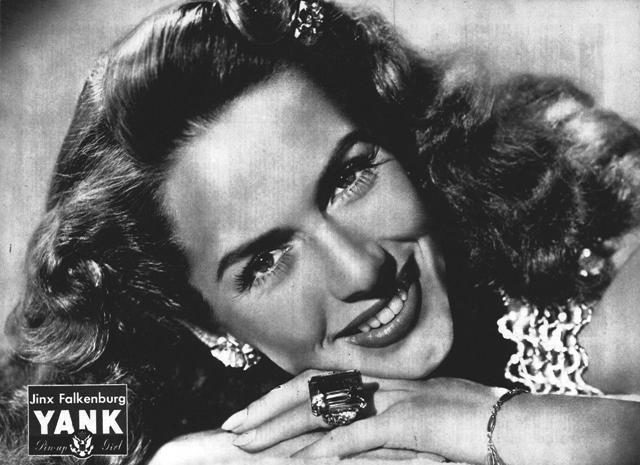
Falkenburg informally retired from broadcasting in 1958 and continued to live in Manhasset. In 1962, she and McCrary anchored 16 weeks of coverage of the Billy Graham Crusade for Christianity.In the early 1960s, Falkenburg was a commercial spokesperson for the American Gas Association. She became vice-president of Marian Bialac Cosmetics, a company owned by Whitney. Her athletic prowess remained on display. She took up golf at the age of 40 and within a short time had a 12 handicap. In 1975, at the age of 56, she was part of a celebrity team that played a pre-opening tennis match at Forest Hills before the start of the U.S. Open.
